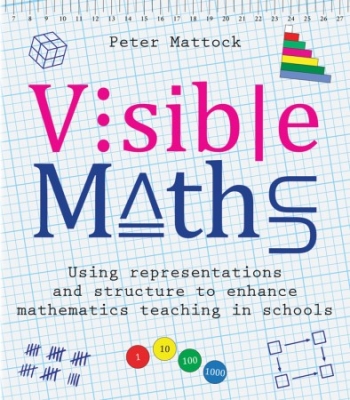
Visible Maths is an attractive volume, full of practical, useful images and tools that will invigorate teachers and inspire their pupils
Peter Mattock's Visible Maths is a fantastic resource for teachers who are looking to help their pupils visualise what mathematical concepts mean. It is an attractive volume, full of practical, useful images and tools that will invigorate teachers and inspire their pupils.
Making mathematics accessible to all is something that is often taken for granted, but for those who recognise it as a vital element in young peoples' (or indeed, anyone's!) education, here is the perfect place to start. Visible Maths challenges assumed knowledge and "reteaches" mathematics in a vibrant and engaging way.
I will be recommending it to our Maths department and indeed anyone with an interest in developing their understanding of mathematics.
This book is clearly laid out, has clear pictures of each representation (you would hope!) and is easy to read. Each chapter takes a particular area of mathematics and explains the different ways these could be shown visually.
‘The true aim of this book is for teachers to feel sufficiently confident in the use of the representations that they can explain enough about the underlying structures of the different concepts so that pupils no longer need to rely on the representations...’ This may seem like a strange claim in a book about how to see maths – once you see it; you won’t need to see it! However, it means a student has a deep enough understanding of the concept. This book is clearly laid out (it covers mathematics in primary and secondary schools), has clear pictures of each representation (you would hope!) and is easy to read. It would be useful for teachers at the beginning of their teaching journey and those who which to refresh their ideas and memories. Each chapter neatly takes a particular area of maths and explains the different ways these could be shown visually. For example, whole numbers can be visualized using tallies, with counters, on a number line, on a line graph, in proportion diagrams, with bar models, with base ten blocks, or with vectors. These ideas are vital, as the more variety of ways a teacher can show a student a concept, the more likely they are to understand and the deeper their understanding will be. The final chapter, is perhaps the most useful to practicing teachers, and answers many more practical classroom based questions with skill and compassion.